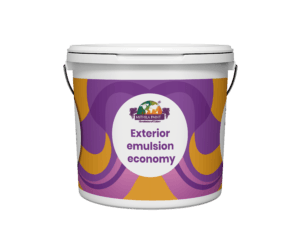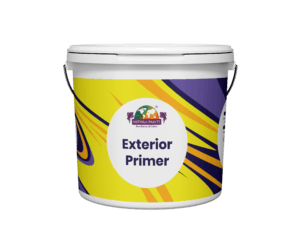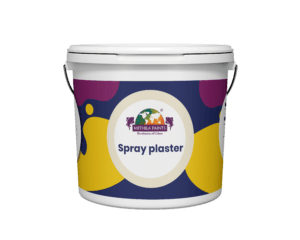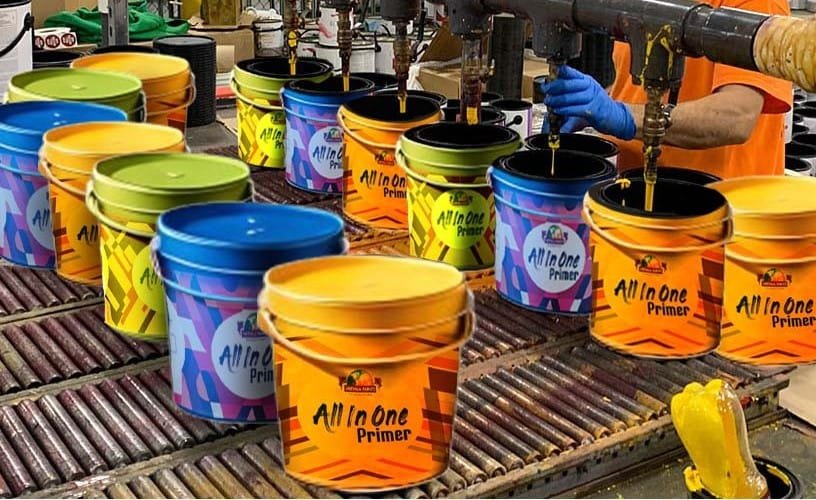Introduction to Mithila Paint Toll Manufacturing in Udaipur
Mithila Paint, a renowned brand in the Indian paint industry, has expanded its operations in Udaipur through toll manufacturing, which has significantly boosted its production capacity and market reach. Toll manufacturing, also known as contract manufacturing, is a business arrangement where Mithila Paint outsources its production process to a third-party manufacturer.
This enables the brand to focus on product development, marketing, and sales, while leveraging the expertise and facilities of a local manufacturer to produce large volumes of paint at lower costs. Udaipur, with its strategic location and access to key raw materials, serves as an ideal hub for such operations. The region’s growing infrastructure and manufacturing capabilities further enhance the efficiency of the production process. Mithila Paint’s toll manufacturing in Udaipur allows it to meet the increasing demand for its high-quality, affordable paint products across various sectors, from residential and commercial to industrial applications. This partnership also supports Mithila’s commitment to maintaining quality standards while optimizing production and distribution channels.
By tapping into Udaipur’s manufacturing ecosystem, Mithila Paint is able to maintain a competitive edge in the marketplace, providing a wide array of paints and coatings that meet the evolving needs of consumers, all while keeping costs manageable and ensuring timely deliveries.

The Relevance of Toll Manufacturing
Toll manufacturing is a process where a company provides the necessary equipment and expertise to produce goods on behalf of another company, often referred to as the client. In the context of Mithila paint manufacturing, this model serves as a vital interface between traditional artisans and modern market demands. By leveraging the skills of local Mithila painters, businesses can maintain the authenticity of the art while enhancing production efficiency.
The advantages of toll manufacturing extend beyond mere production capabilities. For artisans specializing in Mithila painting, this arrangement allows for financial stability and consistent work. Rather than struggling to find individual buyers, artisans can focus on their craft while benefiting from the business expertise of larger companies. This symbiotic relationship fosters a sustainable environment for these traditional artists, ensuring that their skills are preserved and celebrated within a broader market.
Furthermore, toll manufacturing offers access to resources and technology that individual artisans may not possess. This can include advanced materials for painting or marketing strategies that help promote Mithila art in national and international marketplaces. Such resources empower artisans to create high-quality, unique products that cater to evolving consumer preferences while maintaining their cultural heritage.
As the market for traditional crafts continues to expand, toll manufacturing stands as a key player in the intersection of craftsmanship and commerce. By providing a way to streamline production and extend market access, it not only preserves the traditional Mithila paint manufacturing techniques but also elevates the economic status of artisans involved. In this way, toll manufacturing contributes to the sustainability and growth of Mithila art, promoting its relevance in today’s dynamic marketplace.
Udaipur: A Hub for Mithila Paint Toll Manufacturing
Udaipur, often referred to as the City of Lakes, has emerged as a significant location for mithila paint manufacturing, a traditional form of art with roots deep in Indian culture. The synergy of its rich cultural backdrop and favorable industry conditions creates an ideal environment for artisans specializing in this intricate art form. Traditionally associated with the Mithila region of Bihar, mithila paint is celebrated for its vibrant colors and intricate patterns, often depicting themes from folklore and mythology. Udaipur’s integration into this scene is primarily due to its reputation as a center for arts and crafts, drawing artisans and enthusiasts alike.
The local government’s support for creative industries has also played a pivotal role in Udaipur’s rise as a hub for mithila paint toll manufacturing. Various initiatives are in place, aimed at promoting traditional arts and providing resources to artisans. These programs ensure that the legacy of mithila painting not only survives but thrives in modern markets. The convergence of skilled artisans who have migrated to Udaipur, coupled with an increasing demand for these artworks in both domestic and international markets, has fortified the city’s status in this niche sector.
Moreover, Udaipur’s strategic location, coupled with its growing infrastructure, facilitates easier accessibility for artisans and entrepreneurs alike. Workshops, galleries, and artisan cooperatives have been established to foster creativity and collaborative practices. Udaipur now hosts numerous exhibitions and fairs, showcasing mithila paint, thus creating platforms for local artists to gain recognition. This flourishing environment encourages exchange, nurturing a community that appreciates and promotes the beauty of mithila painting.
In light of these factors, Udaipur stands not only as a picturesque tourist destination but also as a burgeoning center for mithila paint toll manufacturing, encouraging cultural preservation and economic growth simultaneously.

Local Artisans: Skills and Training in Mithila Painting
Mithila painting, which originates from the Mithila region of Bihar, India, is not merely an art form but a vibrant cultural expression. Central to the vitality of this art is the community of local artisans who possess a deep-rooted tradition of skills and techniques. The craftsmanship involved in mithila paint manufacturing is unique, often passed down through generations. As a result, preserving these skills has become a priority for many organizations and cultural groups.
Training programs aimed at nurturing talented individuals in this artistic discipline have proliferated in response to the increasing global interest in Mithila art. These programs often encompass workshops that cover various aspects of mithila paint manufacturing, from materials selection to the intricacies of design. Many artisans start their journey under the tutelage of experienced mentors, gaining invaluable knowledge in techniques such as fine line work, the use of natural pigments, and the integration of themes that convey local folklore and traditions.
Furthermore, the transfer of traditional techniques is a critical aspect of these training initiatives. Local artisans often collaborate in groups to share insights and encourage innovation while adhering to foundational methods. This collaborative environment fosters creativity and ensures that the ethos of Mithila painting remains intact. Workshops not only aid in skill acquisition but also serve to reinforce the importance of cultural heritage among aspiring artists.
By investing in the training and development of local artisans, the future of mithila paint manufacturing appears promising. The preservation of this exquisite art form ensures that its cultural significance continues to resonate both locally and internationally. As communities rally to support artistic endeavors, the legacy of Mithila painting is poised to thrive for generations to come.
Market Dynamics: Demand and Distribution of Mithila Paint Products
The market dynamics surrounding Mithila paint manufacturing have evolved significantly in recent years, driven by both domestic and international demand. Originally celebrated for its role in traditional Indian art, Mithila painting has found its place in contemporary decor, home furnishings, and even fashion, thus broadening the scope of its market appeal. Increasing consumer awareness regarding artisanal and sustainable products further stimulates demand, as buyers seek authentic and culturally rich items that tell a story and support local artisans.
In terms of international demand, the global interest in unique art forms has led to a growing market for Mithila paint products outside India. International buyers often favor these products for their distinctive aesthetic qualities and cultural significance, positioning Mithila paintings as desirable collectibles and gifts. With heightened globalization, the accessibility of Mithila paint has expanded through various e-commerce platforms, enabling international consumers to acquire these traditional pieces more readily than ever.
Distribution channels for Mithila paint products have diversified as manufacturers adapt to changing consumer behavior. While traditional brick-and-mortar stores remain important, online platforms have gained prominence, allowing vendors to reach a broader audience without geographical limitations. Social media also plays a crucial role in this transition; artisans and manufacturers utilize these platforms for marketing, sharing their craft’s story, and connecting with potential customers. Collaborations with contemporary artists or participation in craft fairs further enhance visibility and market reach. The multifaceted nature of marketing strategies implemented by Mithila paint manufacturers not only fosters community engagement but also serves to elevate the status of Mithila art in the contemporary market.
Overall, the demand for Mithila paint products is on an upward trajectory, supported by strategic distribution and marketing efforts that bridge the gap between tradition and modernity, sustaining its relevance in today’s marketplace.

The Economic Impact of Mithila Paint Toll Manufacturing in Udaipur
Mithila paint manufacturing has emerged as a pivotal force in Udaipur’s local economy, influencing various aspects of livelihood and community development. This traditional art form, characterized by vibrant colors and intricate designs, not only showcases the cultural heritage of the region but also fuels economic activity through toll manufacturing processes.
One of the most significant contributions of mithila paint toll manufacturing is job creation. As artisans engage in the production and sale of these artistic creations, a multitude of employment opportunities arises. From skilled artisans involved in painting to individuals responsible for supply chain logistics and marketing, the ecosystem surrounding mithila paint fosters a diverse job landscape. These opportunities are particularly valuable for women in the region, empowering them financially and socially, which ultimately contributes to the upliftment of their communities.
In addition to direct employment, mithila paint manufacturing supports local economies through artisan cooperatives. These cooperatives provide a framework for collaboration among artists, facilitating skill development, resource sharing, and collective marketing efforts. By pooling resources, artisans can negotiate better prices for their materials and improve their access to wider markets, enhancing their overall economic stability. Moreover, these cooperative structures encourage the preservation of traditional techniques, ensuring the cultural significance of Mithila art continues to thrive.
Furthermore, the rise of this traditional art form has the potential to boost tourism in Udaipur. Visitors are increasingly drawn to authentic cultural experiences, and mithila paintings serve as a unique representation of Indian artistry. Art festivals and workshops showcasing mithila painting not only attract tourists but also provide a platform for artisans to display their work, further embedding the art form within the regional economy.
In conclusion, the economic implications of mithila paint toll manufacturing in Udaipur are multifaceted, encompassing job creation, the strengthening of artisan cooperatives, and tourism growth, all of which contribute to the broader socio-economic development of the area.

Challenges Faced by the Mithila Paint Industry
The Mithila paint industry in Udaipur, while rich in cultural heritage and artistic expression, faces several challenges that hinder its growth and sustainability. One of the most notable issues is the increasing market competition. The globalization of artisan products has led to a surge in demand for various traditional art forms, prompting artists and manufacturers to adapt to shifting consumer preferences. As a result, Mithila paint manufacturers must not only compete within their regional confines but also with other traditional arts from different Indian states and even international handcrafted products.
Another significant challenge is the availability of raw materials essential for mithila paint manufacturing. Traditionally, this craft relies heavily on natural pigments and locally sourced materials, which may sometimes be scarce or subject to price fluctuations. The inconsistency in the availability of these resources can disrupt production schedules and impact the overall quality of the artwork produced. Furthermore, an increase in demand due to growing interest in Mithila paintings can lead to over-exploitation of natural resources, creating a precarious balance for sustainability.
Additionally, the impact of globalization cannot be overlooked. While it has opened new markets and opportunities for Mithila artists, it has also introduced the risk of cultural dilution. Artists and manufacturers must navigate the fine line between preserving traditional techniques and innovating to appeal to a modern, diverse audience. The need for continuous innovation in artistic techniques and product offerings is paramount to keeping the Mithila paint industry relevant and competitive. By addressing these challenges, manufacturers and artists can work towards forging a path that respects tradition while embracing contemporary changes.
Future Prospects: Growth Opportunities for Mithila Paint Toll Manufacturing
The Mithila paint manufacturing industry in Udaipur stands at the brink of considerable growth opportunities, driven by both cultural preservation and modern market demands. One of the critical avenues for advancement lies in potential collaborations between local artisans and contemporary designers. By tapping into the creativity of both spheres, the industry could yield innovative designs that resonate with younger consumers, thereby expanding the customer base. Such partnerships could rejuvenate traditional art forms while maintaining the integrity and authentic aesthetic of Mithila painting.
Furthermore, engaging with e-commerce platforms can facilitate broader market reach and introduce Mithila paint products to a global audience. The fusion of traditional craftsmanship with modern digital marketing strategies may ensure that Mithila paint toll manufacturing not only survives but thrives in the face of globalization. Craft exhibitions and online marketplaces can serve as vital channels for artisans to showcase their unique works, thus elevating their status while simultaneously enhancing the reputation of Mithila art.
Technological advancements also hold considerable promise for enhancing the Mithila paint manufacturing process. Innovations in eco-friendly materials, sustainable practices, and efficient production techniques can significantly improve productivity while minimizing environmental impact. Automation in certain production stages, coupled with traditional painting techniques, could help meet increasing demand without compromising quality. Additionally, incorporating digital tools for design and marketing could streamline operations and engage with a younger audience effectively.
Emphasizing the blending of modernity with tradition, the Mithila paint industry has the unique opportunity to capture the attention of new generations while staying true to its roots. By integrating new designs that reflect contemporary aesthetics into the Mithila paint manufacturing process, artisans can appeal to a broader market, ensuring that this traditional art form remains relevant and cherished in the years to come.
Conclusion: Preserving Culture through Artisanal Manufacturing
In the exploration of Mithila paint manufacturing in Udaipur, we have delved into both the cultural significance and the economic implications of this traditional artistic practice. Mithila painting, with its rich history and vibrant motifs, serves not only as an artistic expression but also as a means of economic sustenance for the artisan communities engaged in its creation. The toll manufacturing model, discussed earlier, has emerged as a vital framework that allows artisans to harness their skills effectively while ensuring that their traditional crafts are preserved and passed down through generations.
The artisans, who are the heart and soul of Mithila paint manufacturing, often rely on this method to sustain their livelihoods while keeping their cultural heritage alive. Supporting these communities is essential; it helps maintain the heritage and traditions that are inherent in Mithila art. By purchasing Mithila paintings, consumers engage in a wider cultural exchange, ensuring that the art form continues to thrive in a modern economy. The relationship between artists and consumers therefore plays a crucial role in the survival of this traditional craft.
Moreover, awareness around the economic opportunities created by supporting artisan-led initiatives can significantly increase the visibility of Mithila paintings and their creators. It is incumbent upon consumers to make informed decisions about their purchases, understanding that their choices can actively support sustainable practices within artisan communities. Through engagement with Mithila paint manufacturing and its artisans, we can contribute positively toward preserving and promoting this unique art form. By fostering a connection with consumers who value tradition, we ensure the vitality of Mithila painting for future generations.




